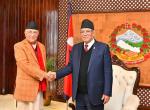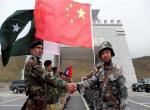Historical Perspective
Myanmar historically had three distinct periods. The monarchy which lasted from the 9th to the 19th century comprised, chronologically, the Pagan Dynasty, the Toungoo Dynasty and the Konbaung Dynasty. The army during this period was a powerful one in the South East Asia, which was ultimately defeated in 1824 by the British after a 60 years struggle. The Army during this period was based on conscription and consisted of infantry, elephants, cavalry, artillery and naval units. Weapons were initially procured from the Chinese which had become integrated by the end of the 14th Century. 16th Century witnessed the introduction of special musket, the Portuguese matchlocks and cannons. Technological gap compelled the Army to buy arms from the Europeans. The Army could defeat the Portuguese and the French in the 17th and the 18th centuries respectively but failed against the British in the 19th century. They lost the three wars against the British and finally Burma was in the latter’s control by 1824.
The British did not trust the local army and initially used the Indian Army to secure the country. Later a few units were formed of the Karens, Kachins and Chins. The Burmese population’s loyalty was doubted and was kept out of the security structure. Just before the beginning of the First World War, the only indigenous military regiment which comprised Myanmar citizens were the 70th Burma Rifles made up of Karens, Kachins and Chins. It was during the First World War that the British relaxed the ban, raising a Burmese battalion in the 70th Burma Rifles, a Burmese Company in the 85th Burma Rifles and seven Mechanical Transport Companies. In addition, three companies of Burma Sappers and Miners, made up of mostly Burmese, and a Company of Labour Corps, made up of Chinese and Burmese were also raised. It is interesting to note that all these units began their overseas engagement during the First World War. The 70th Burma Rifles served in Egypt for garrison duties while the Burmese Labour Corps served in France. One company of the Sappers and Miners distinguished themselves in Mesopotamia at the crossing of the Tigris.
The British knew the fighting capabilities of the Burmese and their ability to challenge authority with regard to their employment against the domestic population. Accordingly, the British practically abolished all Burmese units after the First World War. They consolidated their position and made Burma a separate colony on 01 April 1937. At this juncture they decided to permit Burmese citizens to join the Army but the citizens did not respond as they could feel the mutual lack of trust. It is pertinent to note that prior to the Second World War, the British Burma Army comprised 27.8 percent Karens, 22.6 percent Chin, 22.9 percent Kachin, just 12.3 percent of the Burmese and the remaining British.
In December 1941, the Burma Independence Movement gathered momentum and a group of Burmese activists formed the Burma Independence Army (BIA) with Japanese assistance. This was led By General Aung San who happens to be the father of the current political counsellor Ms Aung San Suu Kyi. The Army had strength of about 23000 and there were internal disturbance between the Burmese and Karens. This organisation was soon transformed into a ‘Burma Defence Army’ on 26 August 1942 and later into the ‘Burma National Army’ on 01 August 1943. General Ne Win became the Commander when the Japanese occupying forces allowed Burma to gain nominal independence in 1943. After the defeat of the Japanese and disillusioned with their occupation, the Burmese Army joined the Allies on 27 March 1945. This brings us to the third period which relates to the post independence era.
Tatmadaw post-Independence
Myanmar became an independent republic on 04 January 1948 with U Nu as the first Prime Minister. Unlike other British colonies, it did not become a member of the Commonwealth. At this time the Tatmadaw (the Army) was weak and lacked organisational cohesiveness. Prior to independence, in September 1945, the Tatmadaw was reorganised by incorporating the British Burma Army and the Patriotic Burmese Force. The British also decided to form class battalions based on ethnicity. There were total of 15 rifle battalions out of which six were Burma Rifles, three Karen Rifles, two Kachin Rifles, three Chin Rifles and one Gurkha Rifles Battalion. The British held important appointments till 1955 and on 01 January 1956 the Ministry of Defence was formed with General Ne Win as the head of the Tatmadaw.
The political situation deteriorated in 1957 and General Ne Win was invited to form a Caretaker Government by Prime Minister U Nu on 28 October 1958. Elections were conducted under the care taker Government in 1960 and U Nu was re-elected as the Prime Minister. On 02 March 1962, General Ne Win staged a coup and formed the Union Revolutionary Council which ruled the country. He formed the Burma Socialist Programme Party whose members were mainly military personnel. There were uprisings again in 1988 which was controlled by the military. Aung San Suu Kyi emerged as a national icon and the only way was to have a reorganised military organisation known as the State Law and Order Restoration Council (SLORC) which permitted elections in 1990. Aung San Suu Kyi’s National League for Democracy (NLD) swept the elections but SLORC refused to recognise the results and placed Suu Kyi under house arrest. The Tatmadaw drafted the Constitution in 2008 and allotted 25 percent of the seats in the Parliament to the Armed Forces. Elections were held in 2010, followed by another in 2015. The NLD swept the elections and Htin Kyaw was made the President while Ms Aung San Suu Kyi was made the State Counsellor. A slow transition to democracy is likely to take place in the near future. Aung San Suu Kyi is the defacto head of the Government.
Military Aspects
The Tatmadaw had its first test immediately after independence was granted to Burma (now Myanmar). The first step was to consolidate the borders in the difficult terrain. At the beginning of 1950, Chinese Kuomintang (KMT) troops under General Li Mai with support from United States, invaded Burma. Their aim was to use Burmese territory to attack the People’s Republic of China. Units of Tatmadaw attacked but failed to remove the attackers due to logistic reasons. The KMT held on till they were finally evicted by joint military operations by China’s People’s Liberation Army (PLA) and the Tatmadaw. The area occupied by the forces was 30000 square kilometres. The operations commenced on 22 November 1960 and concluded on 09 February 1961. The KMT fought in small columns dispersed over a large area. They were able to escape in large numbers due to jungle terrain and their ability to fight in small teams. The Tatmadaw got their territory liberated and consolidated their gains and it has been friendly with the PLA ever since.
As per Military balance 2017, strength of Tatmadaw is 406,000. The strength of the Army is 375000. The Army’s Order of Battle is as under:-
• 14 Regional Military Commands organised in six Bureau of Special Operations,
• 7 Regional Operational Commands,
• 20 Military Operational Commands (Divisions),
• 10 Light Infantry Divisions,
• 10 Armoured Battalions,
• 7 Artillery Battalions and 37 independent Artillery Companies,
• 7 Air Defence Battalions,
• 40 Intelligence Companies,
• 45 Advanced Signal Battalions,
• 54 Field Engineer Battalions,
• 4 Armoured Engineer Battalions,
• 14 Medical Battalions,
• Equipment comes from China, Russia, Ukraine and other countries.
The Myanmar Navy is small in size and has strength of 16000 personnel. It has two stealth frigates, four frigates, and a large fleet of fast attack crafts capable of firing missiles and torpedoes, patrol boats and river craft which make them a versatile force of a total of 122 vessels. It is comparable to the Bangladesh Navy and is mainly trained by the Chinese and Russians. The Navy defends the coastline and participates, where required, in counter-insurgency operations.
The Myanmar Air Force is the aerial branch of the Tatmadaw. The primary mission of the Myanmar Air Force, since its inception, has been to provide transport, logistical and close air support to the Myanmar Army in counter-insurgency operations. It is also used in relief missions. The strength is 15000 personnel and it has 229 aircraft. The main combat aircraft are:
• Mig-29 - 31,
• A-5 of China - 21,
• J-7 of China – 24,
• JF -17 of China – 16, on order.
The Tatmadaw has tremendous political clout in Myanmar.
Tatmadaw and the Rohingya Crisis
The current crisis with the Rohingyas in Rakhine province is being calibrated by the Tatmadaw. The Rohingyas on their part have remained isolated and made no effots to have peaceful relations with other communities in Myanmar. They have formed the Arakan Rohingya Salvation Army (ARSA) also known by its former name Haraqah al Yaqin which is an insurgent group operating in the Rakhine province. The group was possibly formed in 2013 following the riots which have intermittently been taking place since 1978. As per authorities in Myanmar, the group is assisted by foreign Islamic terrorist groups. The ARSA is led by Ata Ulla, a Rohingya who was born in Karachi, Pakistan, and grew up in Mecca, Saudi Arabia. The Tatmadaw has stated that the group is linked to Pakistan and Saudi Arabia.
The Tatmadaw was compelled to intervene in the Rakhine Province after the ARSA launched concerted attacks on a large number of police posts. The ARSA however, despite their Islamist connections, have denied being a Jihadist outfit, though on 25 August 2017, the Myanmar Government has formally categorised the group as a terrorist organisation. It is recently reported that China has working out a plan between Myanmar and Bangladesh for return of the Rohingya refugees from Bangladesh back to Myanmar. The plans are currently being worked out and as of now concrete action is yet to start. In this scheme of the Myanmar Government led by State Councillor Aung San Suu Kyi Tatmadaw would be a principal player. Therefore, the Myanmar Government is careful in dealing with the Tatmadaw.
Tatmadaw and India
India is a good friend of the Tatmadaw. On 07 July 2017, the Commander-in-Chief of the Myanmar Armed Forces, Senior General Min Aung Hlaing undertook an eight days visit to India. India sees Myanmar as a land bridge to the South East Asia. It would also like to offer an alternative to the Chinese support to the Tatmadaw. To this end, in the July 2015 Joint Consultative Commission meeting, the framework for military cooperation was laid down. India stands committed to support modernisation of the Tatmadaw and assist in building a professional Myanmar Navy. India is also grateful to Myanmar for its assistance in counter-insurgency operations in the North Eastern states.
Myanmar has evinced keen interest in Indian defence equipment. Myanmar has purchased artillery guns, rocket launchers, rifles, radars, mortars, bailey bridges, night vision devices, war gaming software, naval gun boats, sonars and acoustic domes, and there is a separate deal to supply torpedoes. Navies of both the countries have undertaken joint patrolling and the Indian Army has started training their personnel. As per the Shillong Times dated 21 November 2017, ‘15 Officers from the Myanmar Army and 16 Officers of the Indian Army were training together at the Umroi Cantonment from 20 to 25 November under the Red Horns Division in a Bilateral Exercise IMBAX- 2017’. The focus of the training was on tactics, procedures, expertise and methodology required by the contingents of the member nations serving in United Nations Peace Keeping Operations (UNPKO).
Partnership with China
India is reaching out to Myanmar in a big way to balance China’s influence in this region. China is equally active and is leaving no stone unturned to woo Aung Sang Suu Kyi. Myanmar is an important component of China’s Belt and Road Initiative (BRI) with numerous projects being planned in Myanmar. The most important one among these is the development of the port at Kyaukpyu. China is planning to use the port as a source for its pipeline leading to Yunnan. It is reported that China has invested $7.3 billion in this project. China also mediates with the warring groups in Myanmar, particularly with the United Wa State Army in the Shan state. India has no such leverage. But the visit of the Myanmar Commander-in–Chief to India is possibly a signal that India is an important partner in Tatmadaw’s calculus.
Conclusion
Tatmadaw has played a historic role in shaping Myanmar. Post independence, since 1948, it has been governing the country. They have drafted a New Constitution in 2008 which has resulted in a slow transition to Democracy. With 25 percent of the seats in Parliament and retaining the important portfolio of Defence, the Tatmadaw remains politically important even then. The military focus of Tatmadaw has been on internal security, particularly in fighting with Karen, Kachin, Mon, Shan and other ethnic minority groups.
The Tatmadaw is undergoing modernisation with help from China, Russia and India. It has been able to aptly balance its relations with the PLA and the Indian Armed Forces. The Tatmadaw will remain an important component of the Myanmar political structure in the short term. India should continue to strengthen Tatmadaw and build bridges of friendship with Myanmar.
(Views expressed are of the author and do not necessarily reflect the views of the VIF)
Image Source: https://commons.wikimedia.org/wiki/File:Flag_of_the_Myanmar_Army.svg











Post new comment